Between 1890 and 1911, Government Architect Walter Liberty Vernon designed and delivered over fifty projects in NSW, some of which are still standing and in use.
One of those is the Pyrmont Fire Station located on the corner of Gipps and Pyrmont Streets in Ultimo, Sydney. It was constructed in 1906 to address the compounding fire danger posed by an intense growth in industrial development in the area during the first decade of the 20th century.
The original building is Federation Free Style and constructed in red clay face brick in English bond with lime mortar over a rusticated sandstone plinth and has decorative sandstone detailing emphasising door and window openings and other features. The colours and textures of the brick and sandstone are strongly contrasted. While the Pyrmont and Gipps Street facades have a fairly strongly defined “base”, “middle” and “top” they feature several asymmetrical features.
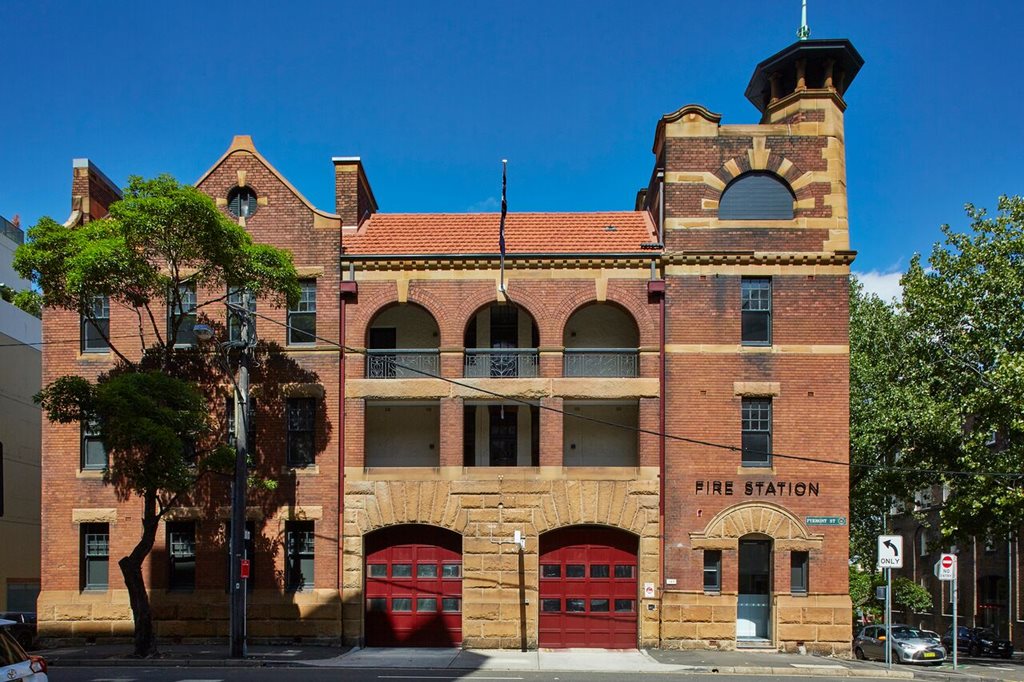
The facade of the fire station was cleaned down following major structural works and brick dust was collected in order to colour match and conceal pentrations in the brick work. The existing windows and balustrades were painted in a contemporary finish while the bell tower is still to be removed and replaced with glazing.
Inside, the building originally consisted of two engine bays with attendant stables, a family size officer apartment and single men’s room on the ground floor. There were also apartments for six families on the second and third floors and a laundry, drying yard and watch tower at roof level.
The Station was staffed until 1945 when it was closed. It then reopened in 1960 and remained active until 1994 when it closed again for minor renovations.
The fire station was reopened in 2007, however for over 40 years the two upper floors of the fire station have remained unoccupied and had been subject to squatters, theft, water damage, fire damage and vermin.
In 2013, Fire and Rescue NSW commissioned Group GSA to refurbish and extend the operational Fire Station and derelict upper floors to improve conditions for the fire fighters and to provide office accommodation for Fire and Rescue NSW staff as part of their relocation program from their current head office in Elizabeth Street, Sydney.
Major works included upgrading the buildings structural integrity to a Category 4 seismic stabilisation in order to withstand major earthquakes and other natural disasters. This was achieved with a meticulous design and then construction process of a new steel portal frame to shore up and protect the existing heritage envelope.
Twenty-four cubic metres of concrete was used to form 1.5 metre deep footings which extended down in to the existing bedrock. This formed the foundations for tonnes of structural steel that protect the building from lateral movement.



The portal frames span two floors and tie to reinforced joist flooring which is braced to the frame with a series of flat bar cross-bracing. The external façade is then tied to the perpendicular walls with a Helibar system.
A new extension was also added to the building over the 3 floors. The contemporary addition is inspired by design methodologies adopted a century ago - Innovation, decoration and social creation.
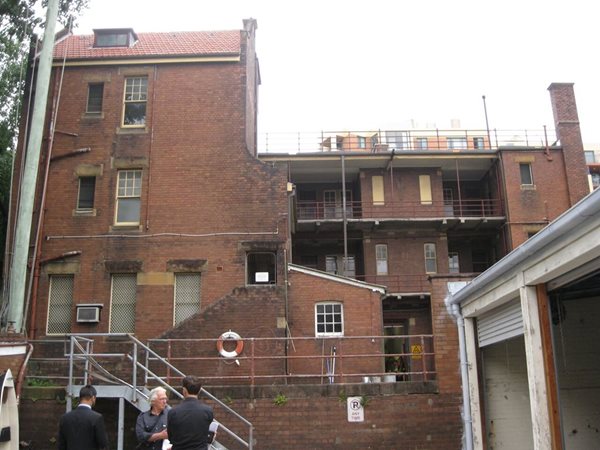
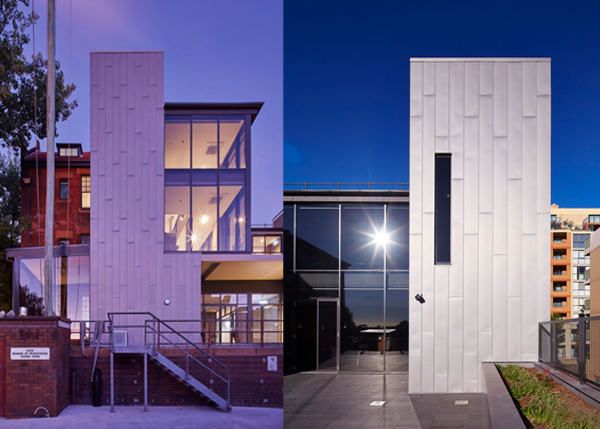
Zinc cladding accentuates the vertical circulation and conceals to glass lift behind.
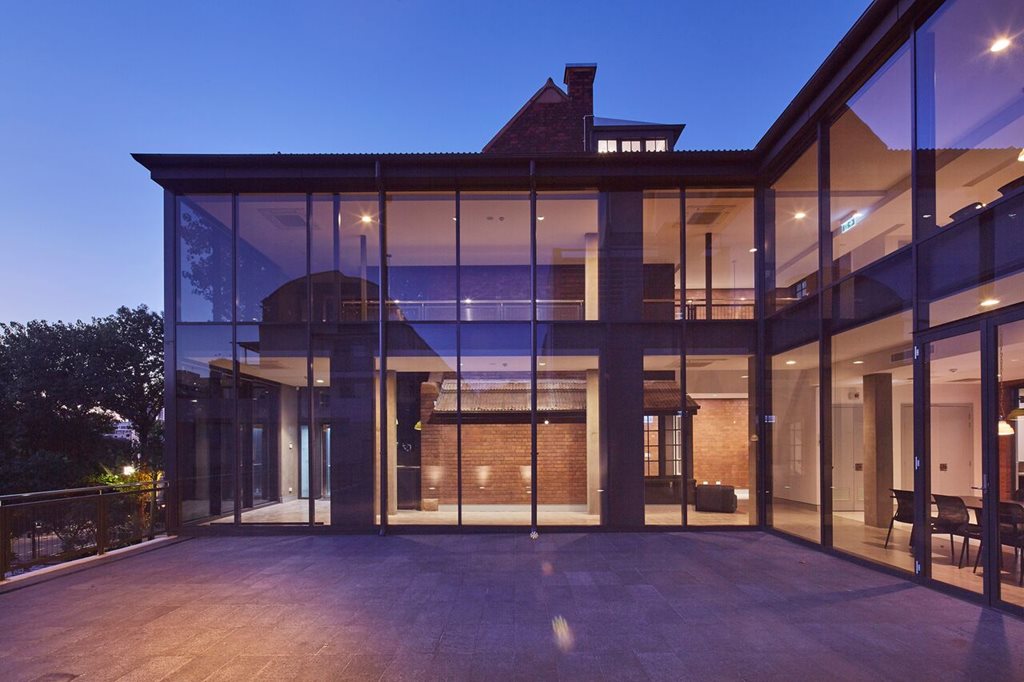
The level 1 communal terrace provides a large space for social gathering and is surrounded by an array of original features, old and new textures and new fittings and fixtures. The original rear exterior of the building is encased like a show piece within the new glazed facade.
The choice of interfacing materials between the heritage building and the extension produces a strong connection between the old and new. The materials complement each other and flow between internal and external spaces in an asymmetrical fashion much like the building before it.
Original concrete floors have been topped with a white concrete, marking the extent of the original building footprint and in contrast, grey concrete floors segregated by a subtle shadow gap defines the extended premises.
Vertical circulation zones are clad in Zinc, linking all three floors and the diverse departments of the organisation together. The zinc cladding also located around landscaping to the level 1 terrace compliments the aged red brick and the new glazed façade encasing the rear of the original building.
Recycled bricks from the site’s dismantled outbuildings were used for infills and repairs.
Group GSA believe this will see the new state of the art premises age beautifully with the original building for another century to come.
In addition to the retention of the original envelope and the incorporation of an extension to the Vernon building, another challenge involved retaining and repairing details and material such as the pressed metal ceiling above the existing interior engine bay. In order to install the joist flooring without damaging the ceiling, the builders removed the existing floor boards above the ceiling, cleaned and stored them, and then re-laid them on top of the new joists.
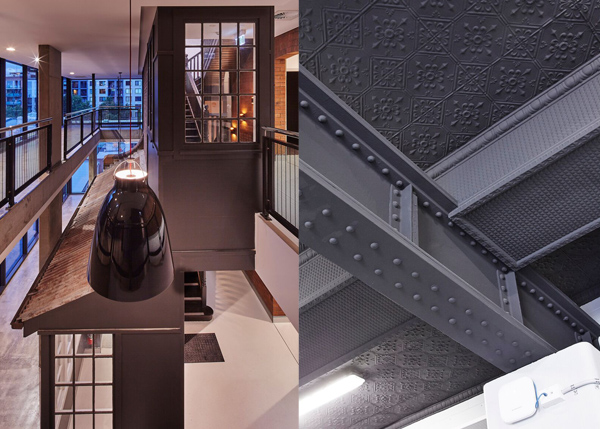
Left: Circulation wraps around the original building envelope, showcasing aged features such as the rusted tin roof and marks the boundary of the original footprint of the building by the introduction of a void. Grey v’s white finishes are a common theme, representing the difference between old and new territories.
Right: original pressed metal ceiling restored and painted
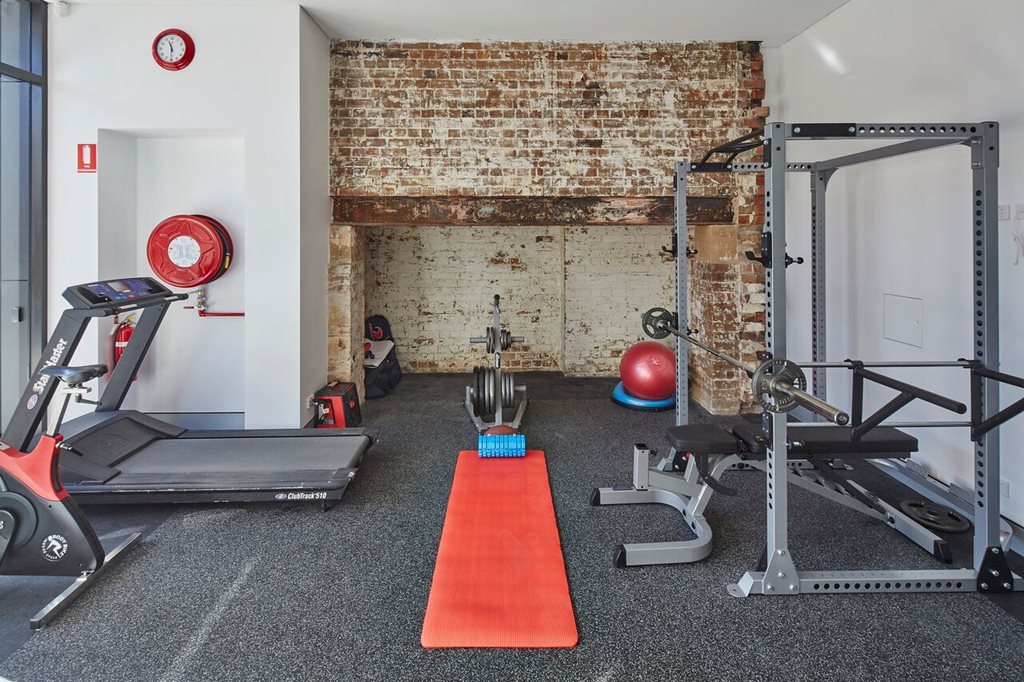
Some of the original ‘Fodder’ details like the brick wall and some reclaimed hardwood were re-used in the gym
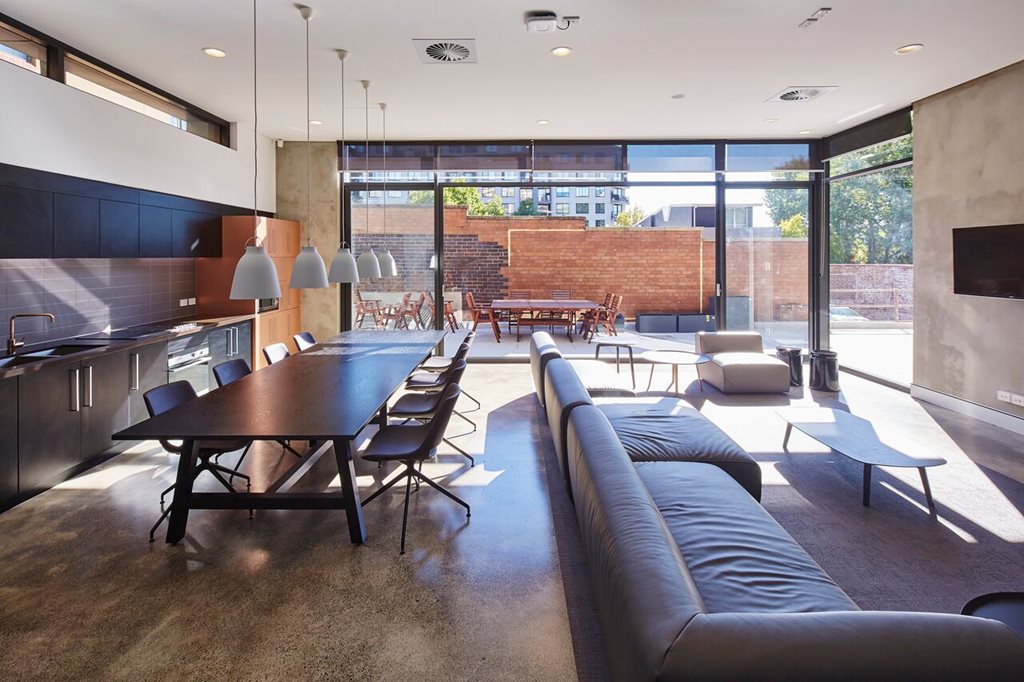
New kitchen and living room facilities.
The original walls and rusted tin roof of the ‘fodder’ room, used for the horses in the early 20th Century has also been retained and can be viewed from the level 2 void, along with some original art works, preserved behind fixed picture frames.
Group GSA have reinvigorated an important piece of NSW architecture and history. They’ve ensured the work of the former Government Architect Walter Liberty Vernon, continues to function as it was intended but now more aligned with contemporary work processes.
PRODUCTS
CARPET TILES
GIBBON GROUP, TRETFORD TILE
PAINTS
DULUX
KITCHEN & BATHROOM BENCHTOPS
CAESARSTONE, EMPERADORO
FLOOR TILES
CALIBRE CONCEPTS, MATT BLACK
KITCHEN JOINERY
LAMINEX, INNOVATIONS IN COPPER METALTEX 970 METALLIC FINISH & BLACK NATURAL FINISH
MARMOLEUM FLOORING
FORBO, MARMOLEUM REAL MARBLED COLLECTION
RUBER FLOORING
REGUPOL, EVERROLL CORE RUBBER FLOOR, 8MM ROLL

